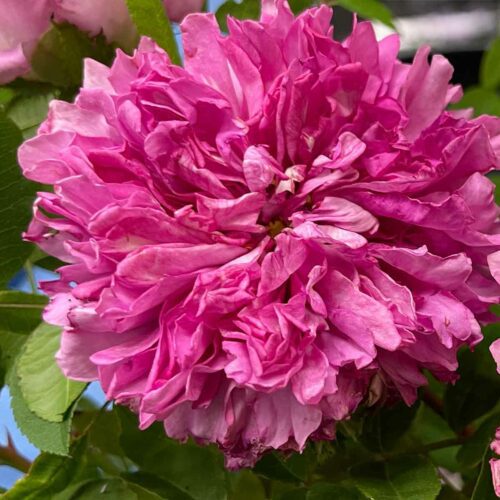Rosa roxburghii plena is commonly called the Chestnut Rose, this is a large growing suckering shrub type rose grown for the fragrant double flowers.

The flowers are pink, ruffled and fragrant with a pleasant fragrance.
This is a species or ‘Wild rose’ with stems that develop a peeling bark over time and are thorny, so this is rose that can be used as a barrier plant.
It tolerates heat, poor soils and even humidity, however it will perform more reliably with good soil and a little extra care.
The common name of Chestnut Rose comes from the large rose hips, the size and similar shape as chestnuts.
How to grow Rosa roxburghii
Use it in the garden border as a specimen plant or background shrub. Try it as an informal hedge.
- Choose a sunny position with a well drained soil.
- Dig in extra organic material and some aged cow manure in areas with poor soils.
- Plant at the same height it was in the container.
- Water in well.
- Mulch around the plant to help suppress weeds.
The less you fertilise and water, the more compact the growth habit will be.
Watering
Extra water during dry spring periods is advisable for good flowering.
Water during long dry summer periods, a deep watering is best.
Pruning Rosa roxburghii
This is a vigorous grower so a little pruning will not go astray.
- Remove any damaged or diseased wood as it appears.
- Prune after flowering unless you are wanting rose hips.
- Once established remove some of the older canes each year after flowering.
- Always prune canes back to the base, do not leave stubs.
- Avoid root disturbance to help prevent suckering.
